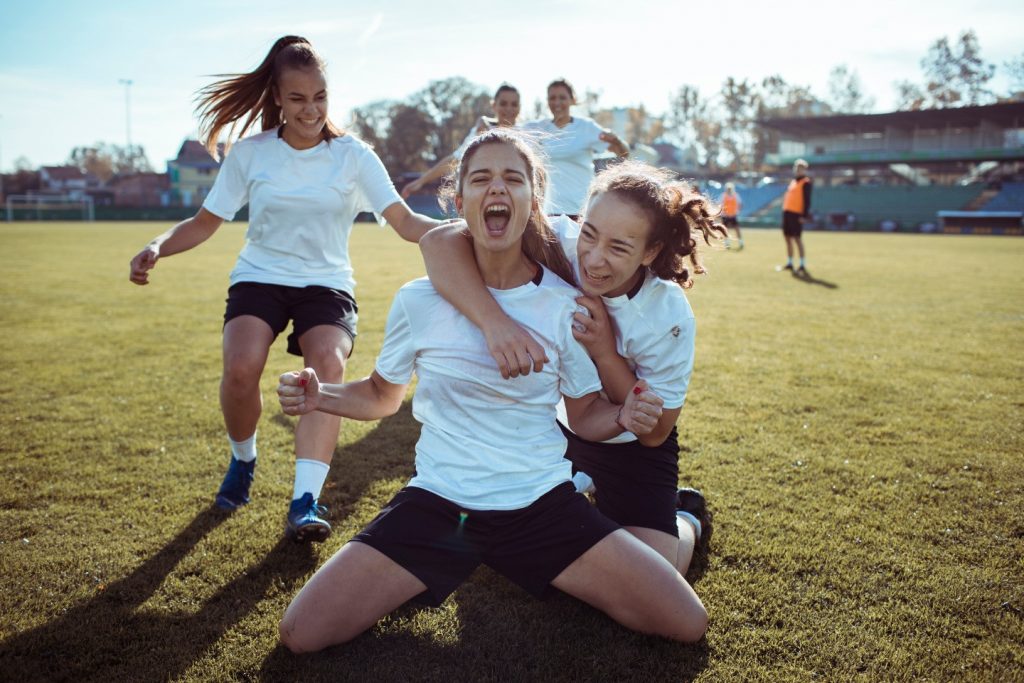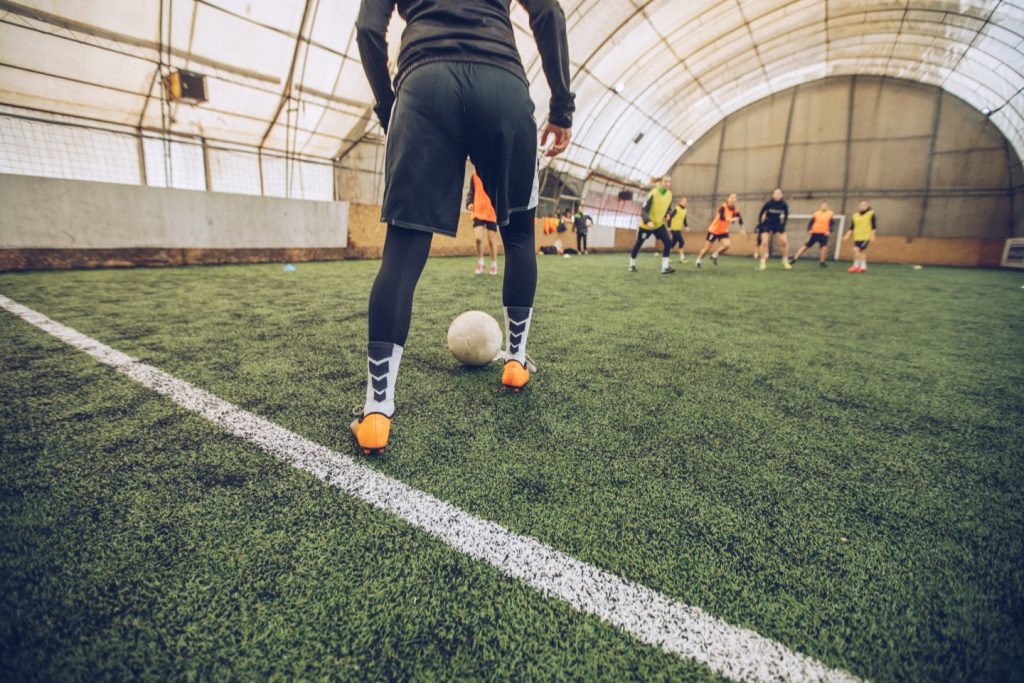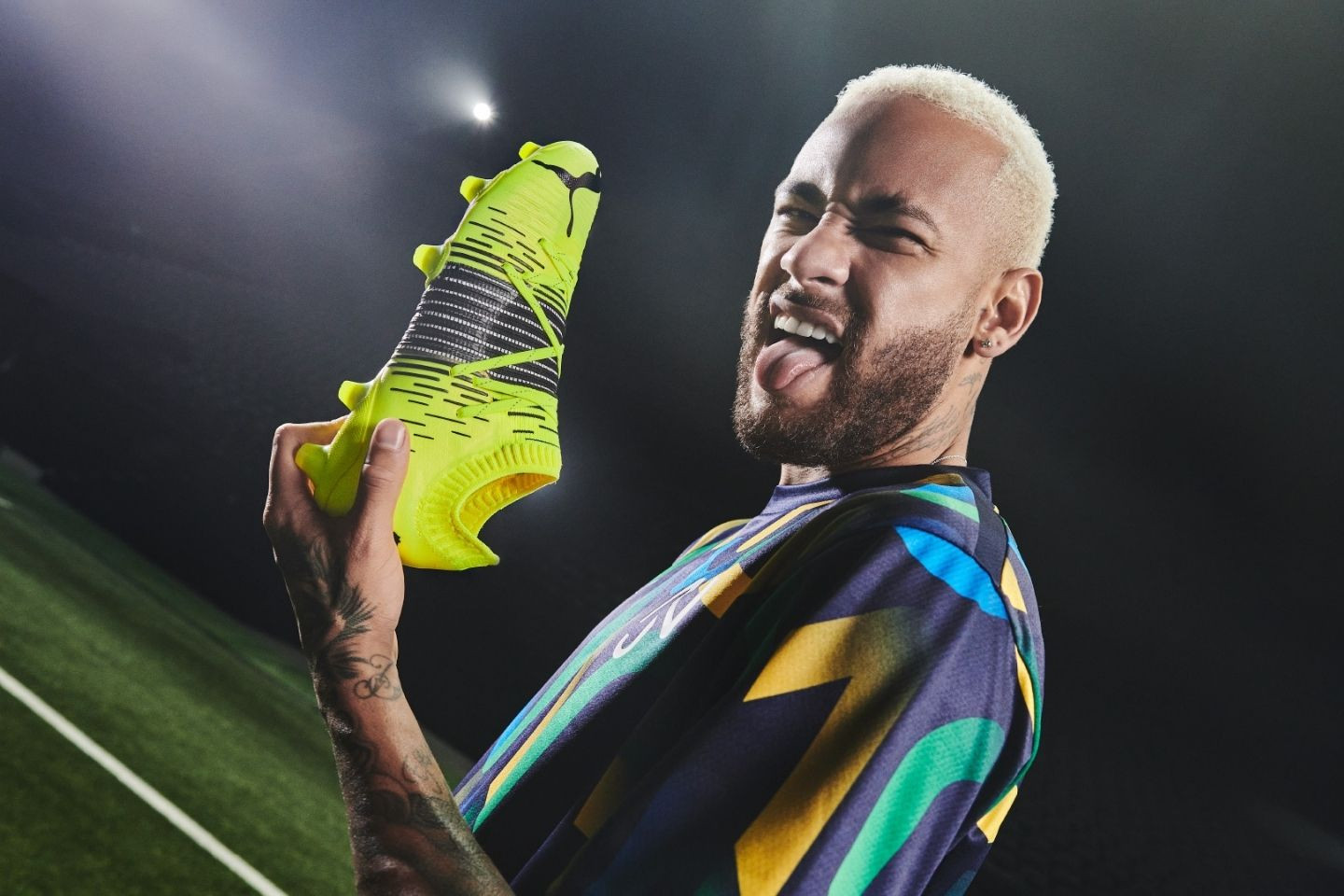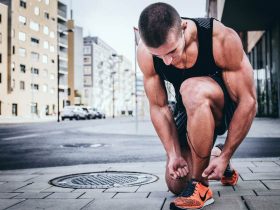And if you plan to continue playing on the “box” in the yard, can you do with ordinary sneakers?
In this special project by Chempionata and PUMA, we advise you to approach the game with your head in mind. To avoid painful kicks and make the game enjoyable, choose the right boots for your goals. Going out in a new model with iron spikes on the “box”, in which instead of the lawn – the sand and dust, you can not only make everyone around laugh, but also cause serious injury to someone, including yourself.
Playing in cleats is definitely more comfortable than in sneakers. The shape of the shoe is important to feel the ball (receive it, move it, and especially hit it). It’s like eating pasta with a spoon – you can, but not as comfortable. If you’re with friends on a barbecue and decided to run soccer for ten minutes – fine, in other situations it’s better to wear cleats.
Usually all the cleats are divided into three types, which are popularly called “cleats”. “Spikes” are for natural turf and big matches, like Neymar’s. “Centipedes” for the street and dirt. “Zalkas” are for indoors. In fact, there are many more types of soccer boots, and the material changes not only the properties of the shoes, but also the rules of fitting them. Let’s figure out how to intelligently approach the selection of “those” boots and why we need them at all.
Why can not play soccer in ordinary shoes?
To play in ordinary shoes is very injury prone. In order not to hurt yourself, you need the right shoes for different weather and different surfaces. Very often it happens sprains, you can twist your ankle. In addition, ordinary shoes do not have good traction, and you just slip through. In my practice, there have been enough cases where the decision to play in “what I am wearing now” resulted in injury. Regular sneakers are soft, but cleats have much better and stiffer grip. Do not forget about the domestic issue, because playing in ordinary sneakers, you will ruin them very quickly.
Play in non-professional shoes is not safe because of the lack of grip. It will be much harder and more difficult to control the ball in sneakers than in cleats. The thick layer of the sole will only hinder you, and in cleats it is much thinner. And most importantly – spikes. If the field is wet, slippery or muddy, you’ll be like on ice in sneakers. Confidence in traction allows you to run at top speed and know that you won’t twist your foot. The only advantage sneakers have over cleats is that today’s thicker models make it easier to kick the ball. Booties are too thin for that. If you want to understand soccer from the inside, you should wear professional shoes, pads and equipment. Then you can get the most into the process.
How to choose the right cleats?
Let’s start with the surface you are going to play on. You have to understand that there is no such thing as one-size-fits-all cleats. And if you always go to the field in one place, it is better to take the shoes that are designed for your conditions. All over the world there is a special marking, which will help you choose the right model.
The sole:
- SG (Soft Ground) or “iron”. Suitable for soft and natural turf, which is extremely rare. On such fields Antoine Griezmann usually plays with his colleagues at the highest level. Standard are 6 to 8 pointed main spikes and a couple of auxiliary plastic ones. They are long – 1,2-1,8 cm. Often the cleats are equipped with interchangeable cleats to adjust them to the type of weather or surface. This sole is not recommended for children under the age of 15 years, so as not to traumatize the feet.
- FG (Firm Ground). The famous “cleats” or, as they are also called, “trinas” for hard, natural or synthetic grass. Suitable for fields that only Mother Nature watches over. On the sole usually from 9 to 14 spikes of average length of 1,2-1,5 cm, which are made of plastic or polyurethane. The main spikes are most often cone-shaped, while the auxiliary ones are trapezoidal or triangular in shape. They are considered the most popular among the players.
- MG (Multi Ground). Suitable for all types of fields, except too soft and hall. Usually, boots with such soles are chosen when you have to play on different surfaces, and there is no possibility to take separate pairs. This is a frequent choice for beginner players, the option is great for children. The soles usually have from 12 to 24 medium to short length 0.8 to 1.2 cm spikes, and there are several types of spikes on one boot. There is also a medium variant FG/MG, in which you can play soccer on almost all types of natural and synthetic fields.
- TT (Turf). Those “centipedes”, so nicknamed because of the many small spikes on the sole, made of rubber. Suitable for playing on artificial turf or fields with hard ground, a minimum amount of grass and even gravel. The cleats are small, usually half a centimeter. Boots with this sole are quite versatile and can be used not only for soccer, but also for other sports, such as running.
- AG (Artificial Grass). The rarest and fairly new type of boot, which is designed only to play on artificial turf. Their structure is very similar to the FG, and they have 14 to 28 cleats of up to one centimetre in size. Occasionally the cleats are crater-shaped (with a depression in the middle). The cleats, the outsole and the entire boot construction are designed for a balanced pressure distribution on the foot.
- IT (Indoor). “Futsal shoes” – footwear for playing soccer in the hall, on the street or even on concrete pavement (on asphalt). The top is the usual classic cleats, but the sole is completely free of spikes. However, there is a coating, similar to the pattern of the tire from the car, which allows you to get good traction on smooth surfaces. Not only can you play soccer in these shoes, but you can also go for a run or work out in the gym. But do not play in these cleats on natural turf, it is too traumatic.
Now you have an idea of how to choose the sole and type of your cleats. Let’s understand the materials used to make the upper part of soccer shoes. There are nuances here, too, and there are quite a few.

Upper material
- Synthetic leather is often used for budget models. Its properties are largely inferior to natural leather, but it is well suited for beginners and young players, because the material has high strength and resistance to deformation. A big plus is waterproofness.
- Polyurethane is similar in its qualities to synthetic leather. Models of it also belong to the budget versions of shoes. Durable, cold-resistant and, in addition, waterproof material. Of the disadvantages it is worth noting that in such boots the foot will not “breathe”, because polyurethane does not let air in.
- Natural leather is better than synthetic leather, but noticeably more expensive. Leather boots are lightweight and flexible. Air flows freely to the leg, so it does not sweat. Due to the high elasticity of such shoes “memorizes” your foot, which gives extra comfort, convenience and helps to feel the ball better. Of the disadvantages – boots made of leather wear out faster and get wet. So remember that in the rain to play in such shoes will be uncomfortable.
When choosing a model, pay attention to the fact that manufacturers often use combined materials. Thanks to recent technology their characteristics have improved markedly. Water resistance also does not always depend on the material. This indicator is influenced by the quality, tightness and durability of seams that connect all parts of the boots.
What do I need to know when trying on?
The main criterion in choosing boots is your personal comfort. Only you will be able to understand if you are comfortable in them, if they fit well, do not fit and do not interfere when playing. For everything else, there are a couple of rules that will be helpful to you.
- It’s best to lace up standing up, in as natural and playful a position as possible. This will give you the most information about comfort and feel. When you sit, there is less load on your foot, making it a little shorter and narrower.
- At the fitting, again, it is worth starting from the material from which the shoe is made.

Polyurethane. Shoes made of it quickly stretches and kneads because of the elasticity, so your foot should sit tight in a boot. However, be sure to leave a small space between the toes and the toe, as the foot may swell a little in training.
Synthetic leather. When choosing these boots, it is better to leave a small space for the foot – for example, choose a shoe half a size or even a size larger. During the game your feet will swell, not getting enough air. So if you buy in size, you’ll get tired too quickly.
Natural leather. When trying on, it is worth finding out what type of leather was used for your pair. If it is a thin kangaroo leather – it is better to choose a tighter. After a couple of games in such a shoe, it will wear out and you will get the most effective model. If the boots are calfskin, it is worth choosing a pair of exactly the right size.
To avoid injury to the toenail plates, because of which the toenails become black, I recommend to take a pair of half a size larger and adjust the remaining space with the second sock. Also parents who will choose shoes for their children, I advise to pay attention to the models with Velcro, not laces. For very young players it will be convenient, you will not have to tie all the time.
How to take care of cleats?
In order for your cleats to serve you as long as possible and over the years have not lost their qualities, it is worth worrying about timely care. Here are a few rules:
- After the game, loosen the lacing and take your foot out effortlessly.
- Use special products for cleaning shoes, do not use household chemicals, which can ruin the surface. For natural leather we recommend a shoe polish with impregnation.
- After each game, you should clean the boots of dirt with a damp sponge or you can use an old toothbrush. Drying is best done with a crumpled newspaper.
- If you have replaceable cleats, be sure to remove them and wipe them down several times a year.
- To avoid rust, it’s a good idea to lubricate the threads.
- Impregnate the seams with wax to keep them watertight.
Using simple boot care tips, you will prolong their life for several seasons, and most importantly – protect yourself from injuries on the field.







Leave a Reply